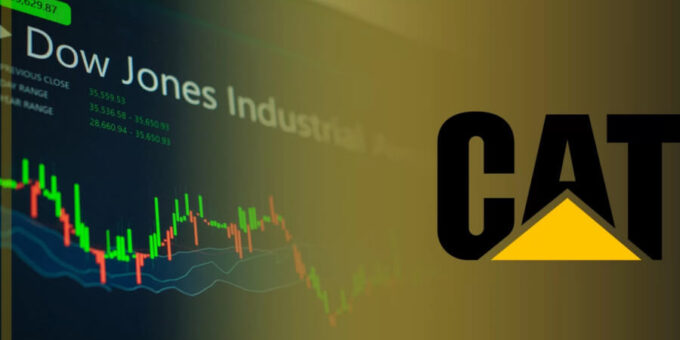
When you turn on the financial news, you’ll inevitably hear phrases like “The Dow is up today” or “The Dow fell 200 points.” For many, the Dow Jones is a mysterious but important term linked to the health of the economy. But what is it, really? And how has it become one of the most-watched financial indicators in the world?
This guide breaks down everything you need to know about the Dow Jones Industrial Average (DJIA)—from its long history to how it works and why it still matters to investors today.
The Dow Jones: Company vs. The Index
First, it’s crucial to understand the difference between two related terms:
-
Dow Jones & Company: This is the financial news and publishing company co-founded in 1882 by Charles Dow, Edward Jones, and Charles Bergstresser. They are famous for creating The Wall Street Journal.
-
Dow Jones Industrial Average (DJIA): This is the stock market index created by the company. When people refer to “The Dow,” they are almost always talking about the DJIA.
The DJIA debuted on May 26, 1896, making it one of the oldest and most followed stock market indexes in the world.
What is the Dow Jones Industrial Average (DJIA)?
The DJIA is a stock market index that tracks the performance of 30 large, publicly-owned “blue-chip” companies trading on the New York Stock Exchange (NYSE) and the Nasdaq.
Think of it as a snapshot of the market. Instead of tracking thousands of stocks, the DJIA provides a simplified look at the market’s direction by focusing on a handful of influential industry leaders. Its primary purpose is to gauge the overall health of the U.S. stock market and, by extension, the broader U.S. economy.
When the DJIA was first created, it only included 12 companies from the industrial sector, such as General Electric and American Tobacco. Today, the index is much more diverse, representing sectors like technology, healthcare, finance, and consumer goods.
Examples of companies currently in the Dow include:
-
Apple (AAPL)
-
Microsoft (MSFT)
-
Visa (V)
-
Walmart (WMT)
-
JPMorgan Chase (JPM)
-
The Coca-Cola Company (KO)
How Is the Dow Calculated? The Price-Weighted Method
Unlike other major indexes like the S&P 500 (which is market-cap weighted), the DJIA is a price-weighted index.
This means that stocks with a higher share price have a greater impact on the index’s value, regardless of the company’s actual size. For example, a $1 move in a $200 stock will move the Dow more than a $1 move in a $50 stock.
The calculation itself involves two main parts:
-
Sum of Prices: The share prices of all 30 component stocks are added together.
-
The Dow Divisor: The sum is then divided by a special number called the Dow Divisor.
The Dow Divisor is a constantly adjusted figure that prevents one-off events—like stock splits or changes in component companies—from artificially distorting the index’s value. This ensures that the only thing affecting the DJIA’s movement is the actual change in stock prices.
A Brief History of the Dow’s Major Milestones
The Dow has evolved significantly since its inception over 126 years ago.
-
1896: The DJIA launches with 12 industrial stocks. Its starting value was 40.94 points.
-
1928: The index expands from 12 to 30 companies, which remains the standard today.
-
1929 (The Great Crash): The Dow plummets, signaling the start of the Great Depression.
-
1972: The Dow closes above the 1,000-point mark for the first time.
-
1987 (Black Monday): The index experiences its worst single-day percentage drop, falling 22.6%.
-
1999: The Dow crosses the 10,000-point milestone and begins including Nasdaq-listed stocks like Microsoft and Intel.
-
2001 (9/11 Attacks): After the markets reopened, the Dow saw one of its worst point drops in history, falling over 7% in a single day.
-
2020: The Dow surpasses 30,000 points for the first time, showcasing its long-term growth despite periods of volatility.
The components of the DJIA are not permanent. Companies are periodically removed or added to ensure the index remains a relevant representation of the U.S. economy.
Why Does the Dow Still Matter Today?
While some critics argue that an index of only 30 companies is too small to represent the entire economy, the Dow remains incredibly influential for several reasons:
-
A Historical Benchmark: With over a century of data, it provides unparalleled historical context for market performance.
-
Psychological Importance: It is the most widely cited market indicator, influencing investor sentiment and media narratives.
-
Blue-Chip Representation: The companies in the Dow are established leaders, and their performance is often a strong indicator of overall economic trends.
For the average person, the Dow serves as a simple, accessible pulse-check on the stock market and the financial landscape. Its rise and fall tell a story about investor confidence, corporate health, and the economic tides that affect us all.
You can also read Here about more articles.
